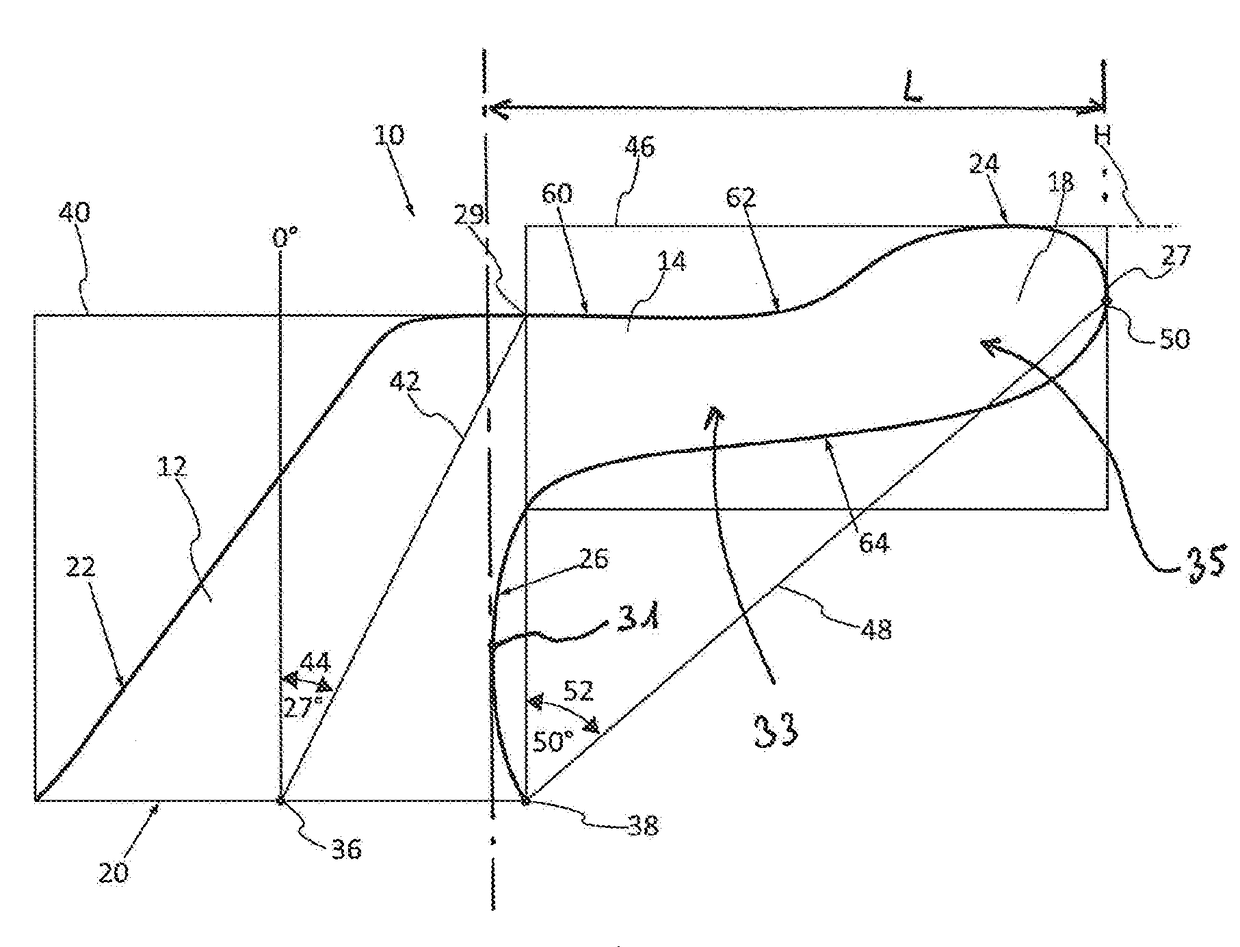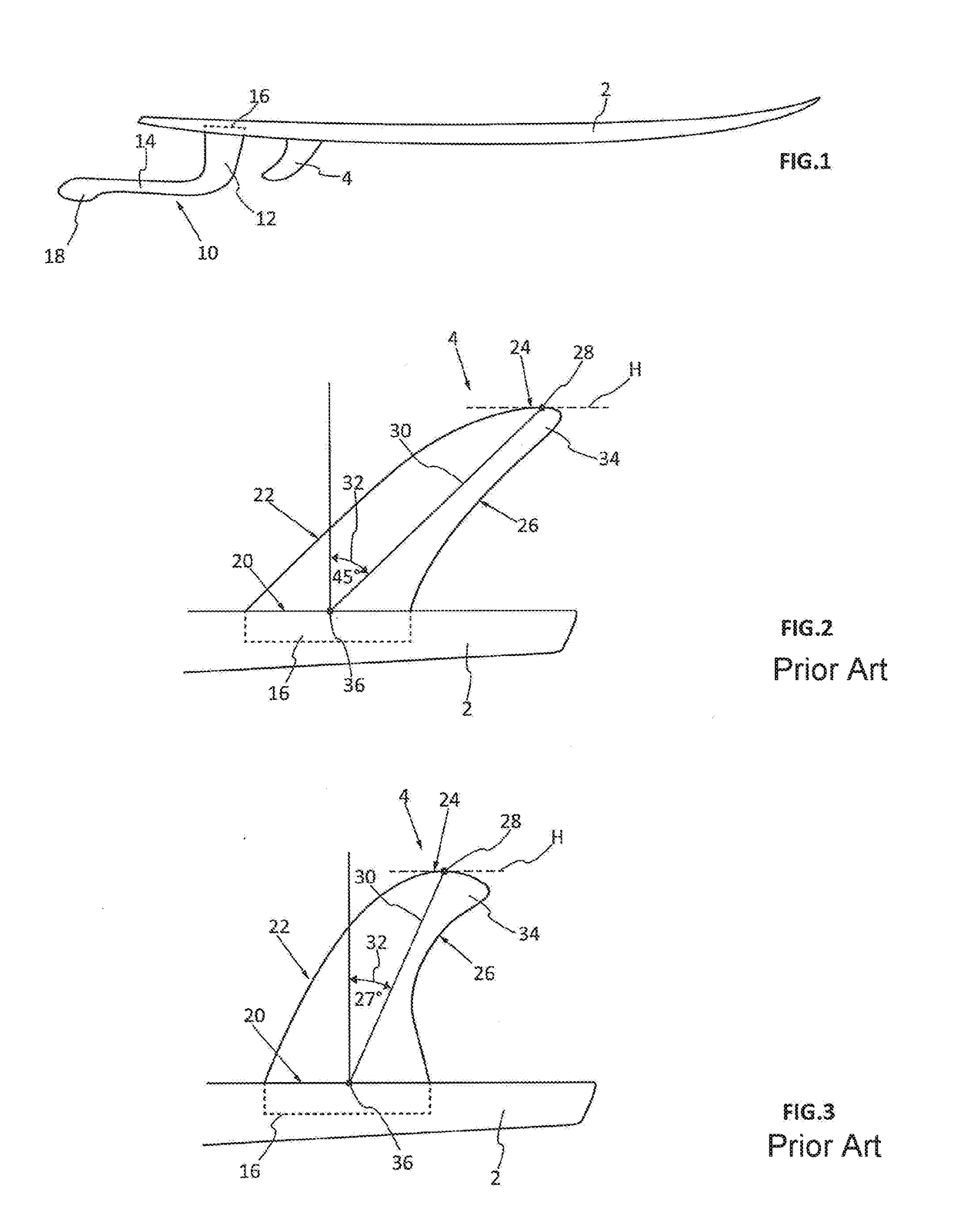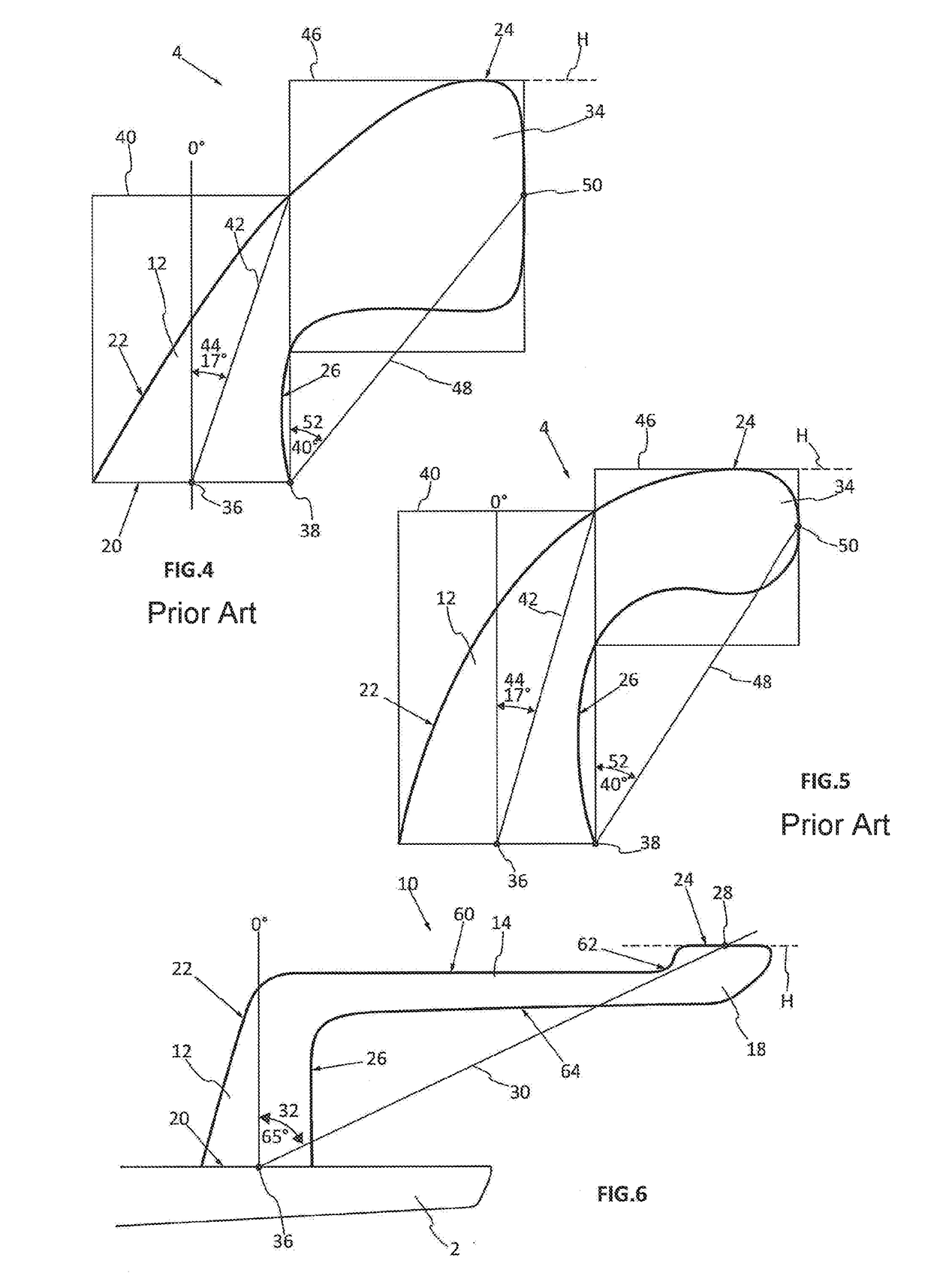Surfboard fin having a rearwardly offset bearing surface
a rearward offset, fin technology, applied in the direction of waterborne vessels, special-purpose vessels, vehicles, etc., can solve the problems of relatively compact assemblies with little lateral flexibility, poor dynamic properties of the fin, etc., to achieve maximum bending, not very flexible, and modulate the bending of the arm
- Summary
- Abstract
- Description
- Claims
- Application Information
AI Technical Summary
Benefits of technology
Problems solved by technology
Method used
Image
Examples
Embodiment Construction
[0055]FIG. 1 shows a surfboard 2 having a front end which is angled upwards so as to surf a wave, and at the rear, in succession along the longitudinal axis, a fin 4 according to the prior art and a fin 10 according to the invention.
[0056]The fin 10 according to the invention comprises a front main body 12 which is extended upwards by an anchoring portion 16 which is inserted in the board so as to secure the fin, and has a lower edge extended rearwards by a substantially horizontal arm 14, ending in a wing 18 projecting downwards from this arm.
[0057]All of the fins in the figures are shown upside down, with the upper and lower sides of these fins always referring to their position in operation, and not as they appear in these upside down drawings.
[0058]FIG. 6 shows a fin 10 in which the leading edge 22 of the main body 12 is extended, after its convex curve, by a lower arm edge 60, which is substantially horizontal. The lower arm edge 60 is extended by a concave curve 62 before cont...
PUM
 Login to View More
Login to View More Abstract
Description
Claims
Application Information
 Login to View More
Login to View More - R&D
- Intellectual Property
- Life Sciences
- Materials
- Tech Scout
- Unparalleled Data Quality
- Higher Quality Content
- 60% Fewer Hallucinations
Browse by: Latest US Patents, China's latest patents, Technical Efficacy Thesaurus, Application Domain, Technology Topic, Popular Technical Reports.
© 2025 PatSnap. All rights reserved.Legal|Privacy policy|Modern Slavery Act Transparency Statement|Sitemap|About US| Contact US: help@patsnap.com



